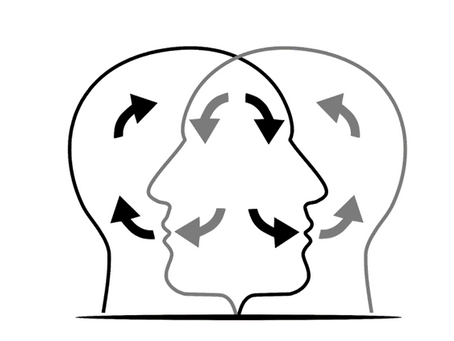We could all do with a little reflexivity
Written by Andrea Isabel López
TL;DR: Reflexivity refers to the examination of our identities, beliefs, motivations, and biases and how they influence what we do or think in a situation. It can help us build respect and trust, practice active listening, create safe spaces for collaboration, lead with humility and empathy, and acknowledge lived experiences. For science communicators, this is a tool that can help us practice empathy and promote equity and belonging.
Why I chose this topic: Over the past two years I have developed a reflexivity guide, introduced reflexivity to my organization as an integral part of our programs, and started to regularly incorporate it into my work. This practice has allowed me to be more thoughtful, humble, and empathetic in my science communication work. My hope is for reflexivity to become a common, essential practice in science communication, instead of just a nice add on or consideration. The goal of this Beyond the Research article is to provide readers an overview of the benefits of reflexivity and a place to start.
As science communicators, we spend hours developing content for publications or events. We consider the accessibility of the venue and how readable the presentation is, among other things. But at times, we miss something. Maybe we didn’t realize that our videos were not accessible to the Deaf community, or that the examples or exercises we used were not applicable to our intended audience. This is where the practice of reflexivity comes into play.
For many science communicators, promoting inclusive and culturally humble science communication is essential. Our motivations might be rooted in our lived experiences, empathy and humility, or just wanting to do the right thing. But even when we have the best intentions at heart, our efforts might go wrong. At times we may even have unintentionally inflicted harm by being unaware of our privileges and biases. Reflexivity provides a place to start when we have a hard time trying to figure out where to begin or how to improve our work.
What is Reflexivity?
At its core, reflexivity is a practice of humility and empathy. It is an examination of our own beliefs, practices, reactions, and motives and how they influence what we do or think in a situation. Reflexivity is a continuous and iterative examination of self. In short, this means taking stock of your identities and positionalities and exploring how they impact how you see the world and how you relate to others. It is a step beyond reflection, as it moves us from just an internal examination into action. For example, if you identify any gaps, potential areas for growth, or things you would benefit to learn from, reflexivity asks you to do something about it.
I learned about reflexivity as a public health masters student in the CUNY Graduate School of Public Health and Health Policy. While I was conducting a series of qualitative interviews during the height of the COVID-19 pandemic, I realized that I was not having success with the interviews. The first interviews lasted around 30 minutes, instead of a full hour, and responses were brief and dry. Our research team relied on reflexivity to pinpoint why the interviews were not going well. We quickly realized we did not consider our interviewees background and identities while we were conducting the interviews. Our questions were filled with jargon, the interviews were packed with too many questions, and the communication before and after the interviews was limited. Practicing reflexivity as a team helped us understand how we could move forward and improve the quality of the interviews while building relationships with our interviewees.
The Case for Reflexivity and How to Practice It
By using reflexivity, science communicators can be better equipped to understand their strengths, weaknesses, beliefs, and behaviors and how they might impact their work. Specifically, it can be a tool to help us acknowledge mistakes and identify potential solutions.
A good place to start is by taking inventory of your identities. Things like gender, race, nationality, academic background, or profession might come up. But, consider additional identities that may not be as salient. Some examples of these might be where you are currently based, any institutions you work for or are affiliated with, or if you have any siblings or kids. It is also important to note that not all identities are static. Partnership status, employment, or becoming a parent are all identities that will vary with time. This is to say, reflexivity will vary by person and context.
Once you have an understanding of who you are, you can move on to explore the identities of people you work with. These could be collaborators, partners, or your intended audience. Understanding your identities and those of the people you work with can help you identify things you have in common or any differences that could impact the way you establish a relationship.
Takeaways
It is important to note that making the case for reflexivity is easier than actually practicing it. Honestly, this process can be uncomfortable at times. Navigating the potential discomfort that comes with recognizing privileges and mistakes, and potential harm we might have inflicted at times can be difficult. But it can help us identify areas for growth, behaviors we need to modify, and topics we need to learn – which will help us be more effective communicators.
Edited by Rebecca Dang and Kay McCallum
Cover image credit: Mohamed Hassan

